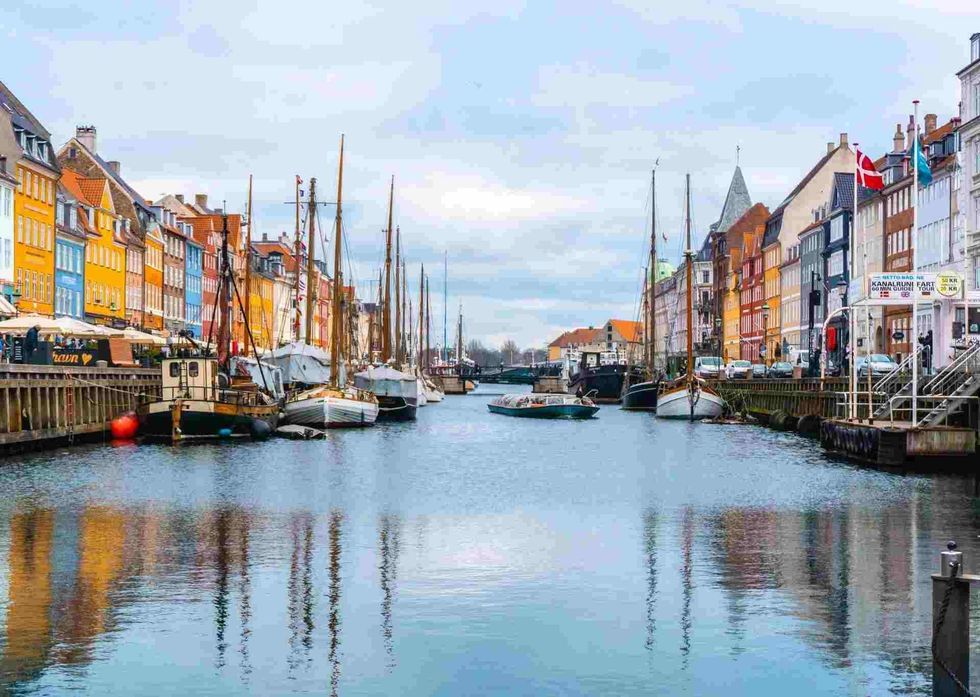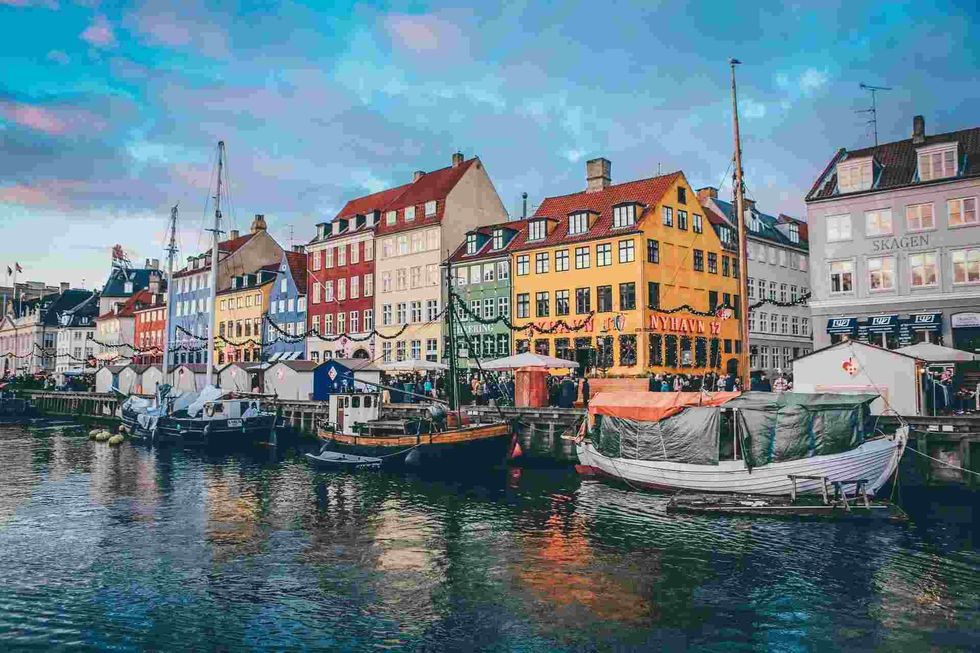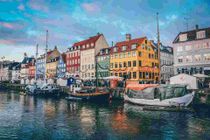31 Denmark Facts To Read Before You Go For A Vacation There!

Denmark is a city that is full of beautiful architecture and the land of the Vikings.
Denmark is a Nordic country in northern Europe and is one of the most populated sovereign states. This country lies between the Faroe Islands and Greenland in the North Atlantic Ocean.
On several occasions, Denmark has been named as one of the happiest nations in the world. Denmark has a way of making people feel comfortable and happy.
The word 'hygge' as used by the Danish means 'creating cozy gatherings' and 'intimate get-togethers'. The word exceeds the Danish soul. From walks through the streets of Copenhagen to eating soft pastries in the bakeries of Denmark, this place radiates a certain warmth toward the people who visit.
Interesting Facts About Denmark
The Danish landscape is quite extraordinary as it consists of several islands and a long coastline. Denmark's highest point is known as the Mollehoj. There is a summit on the Mollehoj near Skanderborg which is about 561 ft (171 m). The tallest mountain in Denmark is the Gunnbjorn Fjeld.
There are several attractions in this Scandinavian country, and Copenhagen is the most popular. When visiting Copenhagen, the capital city of Denmark, it is important that visitors take a walk around the Royal Palace and enjoy its beauty along with the Nyhavn.
Tivoli Gardens, one of the world's oldest amusement parks, is also located in Copenhagen. One of the most famous landmarks in the city is the statue of the Little Mermaid, which is seen at the harbor entrance.
The Little Mermaid is a fairy tale that became a popular story thanks to the animated movie created by Walt Disney.
The reason that Copenhagen has a Little Mermaid statue is that the founder of Carlsberg Beer, Carl Jacobsen, watched the ballet performance created by Beck and Henrique, 'The Little Mermaid'. Jacobsen was so impressed that he asked a Danish sculptor, Edvard Eriksen, to create the sculpture.
Aarhus is the second-largest city in Denmark and is located in Jutland. There are several tourist attractions in Aarhus as well, from the Infinity Bridge to the architecture of Iceberg.
At the Old Town Open Air Museum, which is also quite popular, tourists can learn about the city's history.
Odense is one of the few future-proof cities in Europe and has several robotic companies, which ensures quite a secure livelihood for people in the tech industry. The Rabjerg Mile near Skagen is said to have the largest migrating dunes in northern Europe.
One of the fun facts about Denmark is that they have the oldest flag in the world.
The flag originated in the 14th century, during the battle of Lyndanisse in 1219, which inspired the Danes to win against Latvia. According to the Guinness Book of World Records, it is essentially not the oldest flag in the world, but the oldest flag still in use.
The Danish monarchy is even older, as it started in 935 as an elective monarchy but became a hereditary monarchy in the 17th century and then became a constitutional monarchy in the 19th century.
Education In Denmark
After the introduction of Christianity to the Danish kingdom, the education system was influenced by the Roman Catholic Church. After the period of the Reformation, the schools that were established were taken over by the Danish monarchy.
Elementary school education was not common during this period, but in 1721, about 240 cavalry schools were established throughout the kingdom. The rise of the religious movement of Pietism and the ideas of Rousseau also helped to boost the need for educating the youth.
The old Clergyman's school was transformed into a humanistic Civil Servant's school to teach Greek and Latin, natural sciences, and modern languages in 1809.
The beginning of the 19th century brought changes in the education system, which were influenced by the Danish government, clergymen, and the poet N.F.S. Grundtvig.
Later, scientific and technical development divided the education system into two parts: the language line and the mathematics and science line. This system became the backbone of the general upper secondary education program until 2005.
A public school in 1894 was established, and several measures were taken to meet the requirements of industrial society. The general upper secondary education program known as the Gymnasium was a three-year program and connected the municipal school through the middle school, but it was changed to Realskole, a type of secondary school, in 1903.
The Realskole was removed later and Folkeskore was established, which ensured that there was an egalitarian system among the pupils.
Therefore, Denmark emphasizes receiving education, and therefore there have been several political parties that have suggested changing the compulsory age for education from 9-12. Primary education for students is compulsory, while secondary education for the age group of 15–19 isn't, but they receive free education.
Not only are students trained in the secondary education program, but they can also choose from a varied range of programs and get trained for them.
Post-secondary education is also quite profitable in Denmark for students as there are several universities and degrees to choose from. With proper help from the government of Denmark, the first University of Denmark, the University of Copenhagen, was established in 1479, and then the University of Kiel was built in Schleswig-Holstein.
Denmark currently has about eight universities. Higher education is free of charge in the European Union and Switzerland, and several programs are provided to students.
Denmark Facts for Kids
Denmark is the smallest country amongst the other Scandinavian countries and lies in Northern Europe. It is one of the oldest monarchies in the world, as the Danish royal heritage originated in 958 AD.
The current prevailing monarch is Queen Margrethe II, who has been queen since 1972.
The throne will be succeeded by her son, Crown Prince Frederick, who is married to Crown Princess Mary and has four children.
Of the Danish royals, the most famous is Prince Nikolai, who is the eldest son of Prince Joachim and Countess Alexandra. He is sixth in line for the Danish throne but is famous for his career choice, as the Prince chose to be a runway model for famous luxury brands.
The people of Denmark are referred to as 'Danes', and the official language is Danish. The Danish language is spoken in Denmark and surrounding areas of Germany.
English is the second most commonly used language in Denmark and other areas where the Danish population resides. The Danish language is said to be one of the hardest to learn as it has a bunch of silent letters and extra alphabets with complex pronunciation.
The people of Denmark used to wear clothes made of wool or fax in the period between 1750-1900. The Danish cloth now in the modern world is quite famous as there are several clothing brands such as GANNI which are quite famous amongst fashion enthusiasts.
The cuisine of the Danes consists of potatoes, fish, meat, seafood, other vegetables, and some fruit. The national dish of the Danes is stegt flaesk, which is fried pork belly strips with crackling, served with potatoes, white parsley sauce, or red cabbage.
Some other cuisines in Denmark are the Danish pastry, which is just the Viennese bread, salty licorice, famous licorice in Scandinavian countries, Drommekage, which is the direct translation of 'dream cake', a soft sponge cake, and more.
Denmark's national bird is the Mute Swan, which is a native animal and gains its popularity from the work of the Danish poet and author Hans Christian Andersen, The Ugly Duckling. The Danish flag is said to have been used by the monarchy since the 14th century, making it one of the oldest flags in use.
Its red flag has a white Scandinavian cross that extends to the edges and is shifted to the hoist side.
People in Denmark are also cautious about pollution, and therefore, almost 50% of the population rides bicycles to commute. It is one of the preferred modes of transport in Denmark.
The very famous Lego brick was invented by a Dane named Christiansen in the town of Billund. Denmark was also one of the first nations to legalize same-sex unions in 1989, and same-sex marriage was legalized in the country in 2012.
Janteloven, which means no one is better than the other, shows the mentality of the people of Denmark as it highlights how everyone here is treated equally.

The Denmark Government
Denmark is a constitutional monarchy, which means that the Danish monarch is the formal head of the state and looks over only ceremonial functions. Real power lies in the hands of the Prime Minister and the Cabinet ministers. They have representation in the Danish parliament, Folketinget.
The nation has a multi-party system, and several parties can be represented in Parliament. There are about 179 members in parliament.
Most of the time, the ruling government is made up of a minority administration, and the majority is formed by going into an alliance with one or two smaller parties. The Danish constitution was verified in 1849 and it states the Danish democracy.
The ruling party of Denmark since 2019 has been the Socialist Party, with Mette Frederiksen as Prime Minister.
Denmark is a member of the European Union but isn't a member of the Eurozone due to which, the currency is different from other members of the union. It is also a member and co-founder of the United Nations organizations called NATO, the Nordic Council, the OECD, and OSCE.
Denmark presently focuses on promoting its foreign policy, which ensures security, prosperity, and values. Security is necessary to protect Denmark and Danish interests against threats such as terrorist attacks and cyber-attacks that challenge Danish security.
Prosperity is necessary to create a framework for sustainable growth for the people of the nation and the nation itself. Values are necessary to promote the global responsibility to create a better world for the people who live in it. This concerns human rights, poverty alleviation, sustainable development, democracy, and more.
Facts about the Economy Of Denmark
Denmark has one of the highest per capita gross national products with well-developed social services. The economy of Denmark depends on service industries, trade, and manufacturing. A partial part of the economy is dependent on agriculture and fishing. The currency of the nation is the Danish kroner, which has been in use since 1875.
Denmark joined the European Economic Community along with other Nordic countries like Sweden, Finland, Iceland, and Norway. It was succeeded by the European Union, with the UK as its biggest trade partner.
This economic collaboration is still active, and trade also works with non-member countries now to work toward globally traded goods. In this Danish mixed welfare state economy, the private sectors account for most of the expenditures of the net national income. Public expenditure is mostly directed toward social services, education, the economy, foreign affairs, and national defense.
The country has some of the largest companies in the fields of renewable energy, technology, pharmaceuticals, and the shipping industry. The main import and export partners of Denmark are Germany and Sweden.
The world's largest shipping company, Maersk, is located in Denmark and transports over 12 million shipping containers every year. Some of the main exports from Denmark are wind turbines and machinery, pharmaceuticals, meat and dairy products, furniture, and product designs.
The unemployment rate in Denmark is quite low, and most people work in the services sector. Not only does this country educate its people on various programs to gain knowledge and then secure a job, but it also helps to boost its economy through its initiatives.
Denmark History Facts
By the end of the last Ice Age, people from southern and eastern Europe migrated to Denmark, and the first Danes became fishermen and hunters. The Danes started to form trade links with the Roman Empire during the Iron Age and traded animal fur and amber.
One of the most remarkable periods in Danish history is the age of the Vikings.
The Danish Vikings used to sail far and wide outside the Danish waters as well, and at one point, the Danish king, Sweyn Forkbeard, and his son, Canute the Great, were not only the kings of Denmark, but they also controlled Norway, Southern Sweden, Greenland, Shetland, the Faroe Islands, Orkney, and some other parts of England.
The Christian clergy became famous in 965 AD after the baptism of the Danish king, Harald Bluetooth. The newly adopted religion was accepted for sure, but that didn't make them peaceful as they continued to go into battles and expand their territory to Germany and Estonia.
In 1397, Queen Margrethe I ruled Denmark, Sweden, and Norway under a single monarchy, which was known as the Kalmar Union.
The Kingdom of Denmark proved to have the most power during this period over the waterways as it struggled for control over the Baltic Sea.
The union broke in 1523 and the countries continued their rivalry. As Sweden and Denmark fought for dominance, in 1658, Denmark had to give away Skane, Halland, and Blekinge provinces to Sweden.
After this defeat, hereditary and absolute monarchies were introduced in Denmark. Denmark soon got involved with the German federation in a power struggle trying to affiliate the Danish people in the area of the southern border of Germany.
This led to a war between the two countries, which Denmark won.
Nevertheless, there was still tension brewing, and later, in another conflict, Denmark was defeated. Denmark had remained neutral during World War II and under the circumstances of Germany being defeated in the war, the northern part of Schleswig returned under Danish rule through a plebiscite.
After World War I, the economy of Denmark started to flourish heavily, but it was soon invaded by Germany in 1940. Denmark didn't fight back in order to cause as little damage as possible, but soon an underground alliance overthrew the Nazi rule.
Denmark was liberated in 1945 by the Grand Alliance of the UK, USA, Soviet Union, and the Danish resistance.
We Want Your Photos!
More for You
Bachelor of Arts specializing in English Literature

Akinwalere OlaleyeBachelor of Arts specializing in English Literature
As a highly motivated, detail-oriented, and energetic individual, Olaleye's expertise lies in administrative and management operations. With extensive knowledge as an Editor and Communications Analyst, Olaleye excels in editing, writing, and media relations. Her commitment to upholding professional ethics and driving organizational growth sets her apart. She has a bachelor's degree in English Literature from the University of Benin, Edo State.
Disclaimer
1) Kidadl is independent and to make our service free to you the reader we are supported by advertising. We hope you love our recommendations for products and services! What we suggest is selected independently by the Kidadl team. If you purchase using the Buy Now button we may earn a small commission. This does not influence our choices. Prices are correct and items are available at the time the article was published but we cannot guarantee that on the time of reading. Please note that Kidadl is a participant in the Amazon Services LLC Associates Program, an affiliate advertising program designed to provide a means for sites to earn advertising fees by advertising and linking to Amazon. We also link to other websites, but are not responsible for their content.
2) At Kidadl, we strive to recommend the very best activities and events. We will always aim to give you accurate information at the date of publication - however, information does change, so it’s important you do your own research, double-check and make the decision that is right for your family. We recognise that not all activities and ideas are appropriate for all children and families or in all circumstances. Our recommended activities are based on age but these are a guide. We recommend that these ideas are used as inspiration, that ideas are undertaken with appropriate adult supervision, and that each adult uses their own discretion and knowledge of their children to consider the safety and suitability. Kidadl cannot accept liability for the execution of these ideas, and parental supervision is advised at all times, as safety is paramount. Anyone using the information provided by Kidadl does so at their own risk and we can not accept liability if things go wrong.
3) Because we are an educational resource, we have quotes and facts about a range of historical and modern figures. We do not endorse the actions of or rhetoric of all the people included in these collections, but we think they are important for growing minds to learn about under the guidance of parents or guardians.







